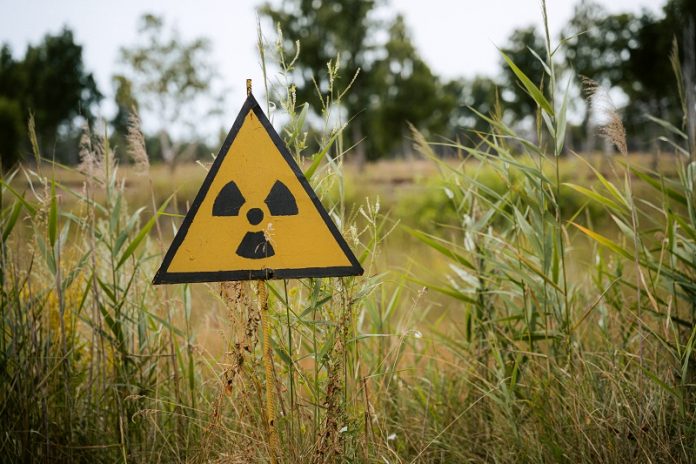
Russian President Vladimir Putin, who warned that countries who interfere with his invasion of Ukraine will face “consequences you have never seen,” recently ordered his military to put its nuclear forces in a “special regime of combat duty.”
It is not immediately clear what is driving Putin’s actions, says Julie Garey, an assistant teaching professor of political science who specializes in international relations and U.S. foreign policy.
“There are many reasons Russia could have done this, and its intention to actually use these weapons—versus threatening their use—cannot yet be inferred,” she says.
The White House does not believe Americans have reason to be concerned about nuclear war.
Rather, “this is really a pattern that we’ve seen from President Putin through the course of this conflict, which is manufacturing threats that don’t exist in order to justify further aggression,” press secretary Jen Psaki said in a television interview.
Still, the mere threat of nuclear weapons is “unnerving,” says Garey, whose research interests include alliance and coalition warfare, U.S. military strategy, and American foreign policy and national security.
News@Northeastern sat down with her to get her take on Russia’s nuclear arsenal.
What does Russia’s decision to put its nuclear weapons on high alert tell you about the way the war is going?
I don’t read much into this in terms of how Putin thinks the war is going. There are many reasons Russia could have done this and its intention to actually use these weapons (versus threatening their use) cannot yet be inferred.
What was your reaction when you first read the news about Putin putting his nuclear forces into ‘special combat readiness?’
There is a lot happening right now, but that this is happening at all is unnerving. Putin’s decision to activate Russia’s nuclear forces is deeply concerning for other states and for the rules-based global order. Russia has a large nuclear arsenal and second-strike capabilities; even if it is a bluff, it is a credible one.
Putin believes in Russia’s assured destruction; should it use nuclear weapons, there may come a point where even that is not enough to deter him. What could be equally concerning is if other nuclear powers—especially the United States—decide to follow suit in preparation to deter or respond to a nuclear attack.
In one of the Cuban Missile Crisis telegrams between the United States and the Soviet Union, [Nikita] Khrushchev says to [John] Kennedy: “We and you ought not now to pull on the ends of the rope in which you have tied the knot of war, because the more the two of us pull, the tighter that knot will be tied.
And a moment may come when that knot will be tied so tight that even he who tied it will not have the strength to untie it, and then it will be necessary to cut that knot, and what that would mean is not for me to explain to you, because you yourself understand perfectly of what terrible forces our countries dispose.”
Putin has tied the knot and is pulling on it. The United States and other nuclear powers have to navigate this while also helping Ukraine protect itself against an unlawful violation of its sovereignty.
Where does Russia rank on the list of global nuclear superpowers?
Russia has the largest known nuclear arsenal in the world, with over 6,200 total weapons— roughly 1,458 strategic warheads on 527 ballistic missiles; 4,500 other warheads; and another 1,750 awaiting decommissioning.
By comparison, the U.S. has about 5,500 [total weapons], and the remaining global powers combined only hold about 1,300, for a total of about 13,000 globally.
Of the other seven nuclear powers, only 3 of whom are legally recognized under the 1968 nuclear nonproliferation treaty, two are members of NATO (France and the United Kingdom), the others are not.
The U.S. also has nuclear weapons stationed in five other NATO countries: Germany, the Netherlands, Turkey, Italy, and Belgium.
To be clear, what makes Russia’s arsenal so concerning is not just the sheer number of weapons, it’s also their capacity to deliver these weapons to targets all over the world. They have the requisite delivery systems—short- and medium-range ballistic missiles, intercontinental ballistic missiles, cruise missiles, submarine-launched ballistic missiles, and aircraft bombers.
Like the United States, it has been working on modernizing its existing arsenal and delivery systems. Putin has also said that Russia has been working to develop new delivery systems.
Ukraine’s president, Volodymyr Zelenskyy, said at the Munich Security Forum in February that Kyiv had made a mistake abandoning the nuclear weapons it inherited from the Soviet Union. How big an arsenal did Kyiv have?
I’m seeing reports saying around 5,000 Soviet weapons. For comparison, Russia was believed to have about 30,000 total in its arsenal in 1991, so about one-sixth of the Soviet Union’s total stockpile. According to the U.S. State Department, the American arsenal was around 22,000 in 1989.
Do you think that the U.S.’s unwillingness to defend militarily a friendly country like Ukraine can make at least some American allies believe that nuclear weapons are the only way to guarantee their sovereignty?
No, I don’t. The Budapest Agreement, to which Russia was also a party, was not a binding treaty and certainly does not obligate anyone to respond to nuclear threats with preventative nuclear strikes.
Europe and the United States have thus far been united in their response to Russia’s aggression. They recognize the advantages and pitfalls of any foreign presence on the ground in Ukraine.
NATO has not yet committed to a No First Use policy, but has maintained a nuclear posture of “credible deterrence and defence” for the alliance.
If Russia’s threats lead non-nuclear states to argue nuclear weapons are imperative to their sovereignty, and they develop programs in violation of decades of international law, it will be because of Russian aggression.
Written by Peter Ramjug.



